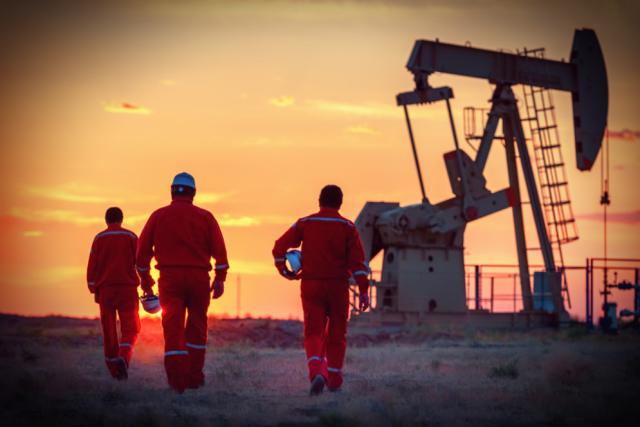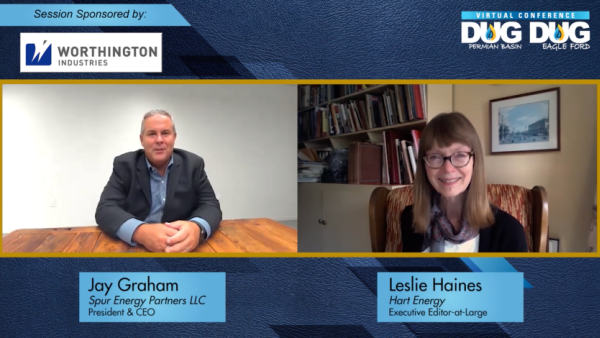
People throughout this industry are reeling, but they are also focusing: They are looking anew at every aspect of their business strategy, assets in their portfolio, decisions they’ve made, the balance sheet, the staff, the joint ventures. (Source: Shutterstock.com)
Learn more about Hart Energy Conferences
Get our latest conference schedules, updates and insights straight to your inbox.
[Editor's note: A version of this story appears in the October 2020 issue of Oil and Gas Investor magazine. Subscribe to the magazine here.]
Someone supposedly said, while languishing in the county jail in the Old West, or maybe it was in an old movie about the West, “Knowing you’re gonna’ hang in the morning really focuses the mind.”
We might be sitting here in a similarly prickly situation today, like that poor soul in jail. People throughout this industry are reeling, but they are also focusing: They are looking anew at every aspect of their business strategy, assets in their portfolio, decisions they’ve made, the balance sheet, the staff, the joint ventures. If the price of oil can’t seem to get above $40/bbl and stay there, and global demand for the commodity remains so wobbly, and natural gas prices are not worth discussing, then everyone in the oil and gas business knows what they face.
But whatever direction macro factors take, executives know how to respond, and the industry will be the better for it. Yes, some good companies will fall by the wayside, which is a disappointing thing, terrible for employees and investors. But for those who remain, new efficiencies and better responses will propel them to greater heights. In this way, the one good side effect of this awful downturn—disciplined focus—will last.
Best practices are constantly refined and then shared. Savings are achieved. For example, Spur Energy Partners CEO Jay Graham shared with us at our virtual DUG Permian Basin and Eagle Ford conference that the company can drill a well in the Yeso Trend in fewer days, and has reduced LOE by 20%, compared to when it acquired the assets just more than a year ago. Matador Resources crowed at press time about how low its drilling and completion costs have become in the Permian Basin; many other E&Ps have done the same over the past year.

On the conference calls for the second quarter, many more E&P chiefs echoed these themes: reduced costs per foot drilled, more productive wells, cautious spending for the rest of the year, more hedging, lean staff, less G&A. Certainly these actions are to be applauded, but investors may be skeptical for a while yet, hoping that if and when oil and gas prices climb again, the newfound discipline lasts.
One industry veteran we spoke with, who has worked for majors and independents, offered a great way to think about things: Is any action or decision, asset or staff person, one of convenience or ego, or really a necessity? During the boom days, egos often ran wild, if we’d care to admit it. The pullback from that is often painful, but it has to happen, and it is.
One source explained to us his unusual way to analyze E&P company efficiency at a glance: If you go to the main parking lot of your company on a Saturday morning and the lot isn’t at least 20% full, then something is wrong. If some employees have so much to do that they have to work a little extra, that means the company hasn’t become top-heavy with too many employees, such that everyone can comfortably accomplish the work that needs to be done in a 40-hour week.
Of course, figuring out what needs to be done and what is nice to get done, is the real trick. Focusing the mind. Discipline is here, but how long will CEOs hold to it? I think this will continue to be the new standard of operations. SNAFU: Situation normal, all focused up.
Widespread, insistent calls from investors demanding cash flow and returns will not go away. The Institute for Energy Economics and Financial Analysis released a study in September that showed that for the 34 E&Ps it examined, all of them had negative cash flow from 2010 to 2019—the shale revolution’s first and best decade. Producers spent more than they made. Sure, the result was a stupendous technical feat that upended old geopolitical beliefs.
CEOs appear to have seen the light. They are holding production flat, in order to rein in spending this year and probably through next year—unless the price of oil rises well into at least the $50s.
If the resulting lack of robust completion activity lasts long enough, the natural decline curve in every field will kick in, and at some point, supply may not be enough to meet demand. No one can predict exactly when that would be. For now, domestic production is down to about 10.5 MMbbl/d or 10.8 MMbbl/d from last year, but the EIA’s most recent Short Term Energy Outlook foresees recovery to about 11 MMbbl/d next year. A lot of that increase will come from wells turned back on and DUCs completed. The number of rigs at work is low, probably too low to keep production flat.
We look forward to CEOs soon giving us their thinking on all this and unveiling preliminary 2021 drilling plans; their comments should start rolling through any time now.
Recommended Reading
E&P Highlights: April 15, 2024
2024-04-15 - Here’s a roundup of the latest E&P headlines, including an ultra-deepwater discovery and new contract awards.
Trio Petroleum to Increase Monterey County Oil Production
2024-04-15 - Trio Petroleum’s HH-1 well in McCool Ranch and the HV-3A well in the Presidents Field collectively produce about 75 bbl/d.
Trillion Energy Begins SASB Revitalization Project
2024-04-15 - Trillion Energy reported 49 m of new gas pay will be perforated in four wells.
Exxon Ups Mammoth Offshore Guyana Production by Another 100,000 bbl/d
2024-04-15 - Exxon Mobil, which took a final investment decision on its Whiptail development on April 12, now estimates its six offshore Guyana projects will average gross production of 1.3 MMbbl/d by 2027.
US Drillers Cut Oil, Gas Rigs for Fourth Week in a Row-Baker Hughes
2024-04-12 - The oil and gas rig count, an early indicator of future output, fell by three to 617 in the week to April 12, the lowest since November.




